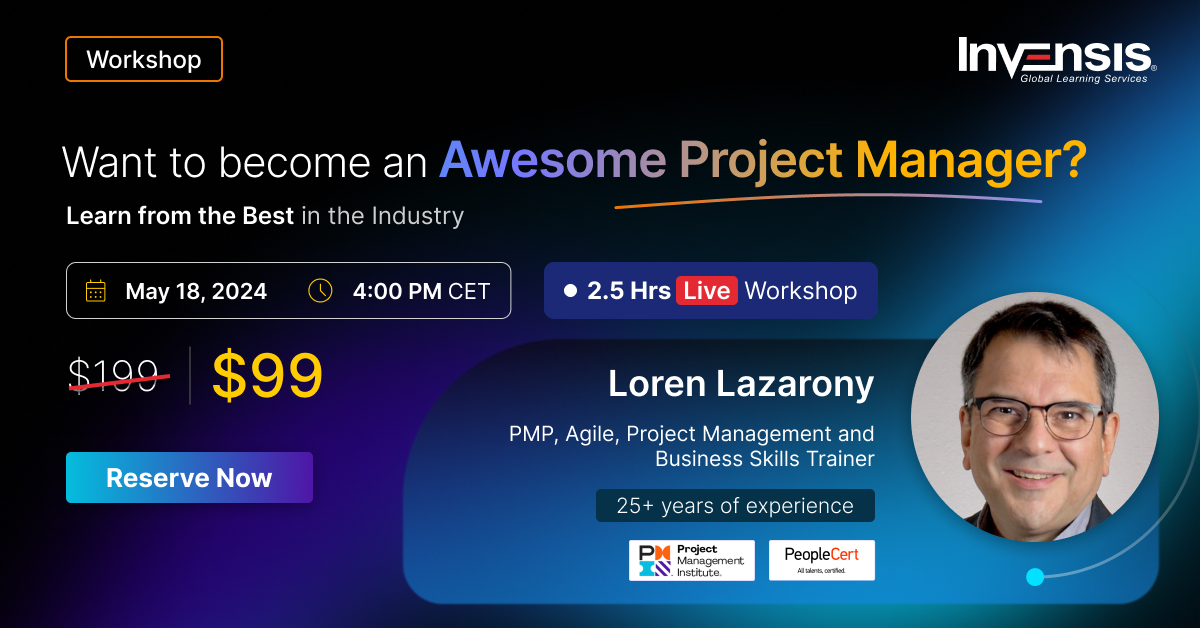
Project Portfolio Management (PPM) is important to any organization’s operations. It involves carefully selecting, prioritizing, and managing projects to align with the organization’s goals and ensure the best use of resources. Unfortunately, the traditional approach to PPM (Project Portfolio Management) can be rigid and inflexible, making it difficult to adapt to changing circumstances. That’s where Agile Portfolio Management comes in.
Agile is a flexible and adaptive project management methodology widely adopted across various industries. It emphasizes collaboration, transparency, and continuous improvement, making it a perfect fit for project portfolio management.
This blog will explore the benefits of incorporating Agile principles into project portfolio management and how organizations can implement Agile project portfolio management effectively.
Whether you are a seasoned project manager or new to the field, this blog post will provide valuable insights into the benefits of Agile for project portfolio management.
What is Agile Portfolio Management?
Agile portfolio management is a flexible and adaptive approach to managing an organization’s portfolio. It incorporates the principles and practices of Agile project management into managing a portfolio of projects, programs, and initiatives.
It aims to align the organization’s projects with its strategic goals and ensure that the right projects are being prioritized, managed, and delivered efficiently.
In Agile portfolio management, projects are managed iteratively and incrementally, allowing for continual adaptation to changing circumstances and requirements. This approach emphasizes collaboration, transparency, and continuous improvement and encourages teams to work together to deliver the best possible outcomes.
Agile project portfolio management differs from traditional PPM project management (Project Portfolio Management) in its flexibility and adaptability, its focus on delivering value over following a rigid plan, and its emphasis on collaboration and continuous improvement. As a result, it enables organizations to be more responsive to changing business needs and to make quicker, more informed decisions about their project portfolios.
How does it differ from Traditional Project Portfolio Management?
Traditional project portfolio management (PPM) is a more rigid and structured approach to managing a portfolio of projects.
It is often characterized by the following:
- Centralized control: Traditional PPM is often controlled by a central project management office (PMO) or senior management, who decide which projects to prioritize, allocate resources, and monitor progress.
- Heavy documentation: Traditional PPM relies on extensive documentation, such as project charters, project plans, and status reports. This documentation is used to communicate project plans, track progress, and make decisions about allocating resources.
- Emphasis on planning: Traditional PPM heavily emphasizes planning, with detailed project plans and schedules developed in advance. This can make it difficult to respond to changing circumstances and requirements.
In contrast, Agile portfolio management emphasizes:
- Decentralized decision-making: APPM encourages teams to make decisions about their projects, with senior management and the PMO playing a supportive role. This enables teams to be more responsive to changing circumstances and requirements.
- Lean documentation: APPM uses only the minimum necessary documentation, such as product backlogs, sprint backlogs, and retrospectives. This reduces overhead and enables teams to focus on delivering value.
- Emphasis on delivering value: APPM places a heavy emphasis on delivering value, with projects delivered in small increments and refined based on feedback from stakeholders. This enables teams to respond quickly to changing circumstances and requirements.
Traditional project portfolio management is a more structured and centralized approach. In contrast, Agile project portfolio management is a more flexible and decentralized approach that emphasizes delivering value and responding to change.
Benefits of Agile Portfolio Management
Infographics on Benefits of Agile Portfolio Management Requires
Agile portfolio management refers to managing a portfolio of projects in an agile manner, focusing on flexibility, collaboration, and continuous delivery.
Here are some benefits of Agile PPM:
Improved Alignment with Business Objectives
Agile PPM allows organizations to prioritize projects based on their alignment with the overall business strategy, ensuring that resources are allocated to the initiatives that will have the most impact.
Increased Transparency
Agile PPM provides a clear view of the status and progress of all projects in the portfolio, enabling stakeholders to make informed decisions and providing a basis for continuous improvement.
Better Prioritization and Decision-Making
Agile PPM enables organizations to continuously reassess and adjust their portfolio of projects in response to changing business needs and market conditions, allowing them to make better decisions about which projects to prioritize and invest in.
Enhanced Collaboration and Communication
Agile PPM promotes collaboration between teams working on different projects and helps to break down silos and foster communication across the organization.
Faster Delivery of Value
Agile PPM emphasizes delivering small, incremental improvements that add to significant value over time, enabling organizations to deliver outcomes faster and with higher quality.
Increased Agility and Responsiveness to Change
Agile PPM allows organizations to quickly pivot and adapt to changing business conditions and customer needs, providing a competitive advantage in rapidly changing markets.
Improved Risk Management
Agile PPM provides a framework for continuously reassessing and mitigating risks, ensuring that projects are delivered on time, within budget, and with the desired level of quality.
Enroll now with Invensis Learning’s Agile Project Management Courses and master the Agile methodology!
Agile Portfolio Management requires defining a clear vision, establishing a governance structure, identifying and prioritizing projects, using Agile project management methods, continuously reassessing and adjusting, communicating and collaborating effectively, and measuring and reporting success.
By following these steps, organizations can achieve better alignment, increased transparency, and improved project portfolio delivery.
Implementing Agile for PPM Project Management requires the following steps:
- Define Agile Portfolio Vision: Develop a clear understanding of the organization’s goals and objectives for implementing Agile Portfolio Management.
- Establish governance structure: Create an Agile Portfolio Management team responsible for decision-making, prioritization, and oversight.
- Identify and prioritize projects: Identify all projects in the portfolio and prioritize them based on their alignment with the organization’s goals and objectives.
- Implement Agile project management methods: Use Agile project management methodologies such as Scrum, Kanban, or Lean to manage individual projects within the portfolio.
- Continuously reassess and adjust: Regularly reassess the portfolio to ensure that the projects align with the organization’s goals and objectives and make changes as necessary.
- Communicate and collaborate: Ensure effective communication and collaboration among all stakeholders involved in the portfolio, including project managers, team members, and senior leaders.
- Measure and report success: Track and report on the success of the portfolio and individual projects using metrics such as project delivery time, budget, and quality.
Key Principles of Implementation of Agile in PPM Project Management
Agile is a popular project management approach that emphasizes flexibility, collaboration, and customer satisfaction. In recent years, it has gained widespread adoption in the Project Portfolio Management (PPM) domain, which involves managing and aligning a portfolio of projects with the overall business strategy. The key principles of implementing Agile in PPM are designed to promote efficiency, accountability, and alignment with business goals.
The key principles of implementing Agile in Project Portfolio Management (PPM) are:
- Flexibility: Agile in PPM allows changes in project scope, requirements, and priorities to be accommodated throughout the project life cycle.
- Collaboration: Agile in PPM involves close collaboration between the project team, stakeholders, and business owners to ensure alignment with business goals.
- Empowerment: Agile in PPM empowers team members to take ownership of their work and make decisions in the project’s best interests.
- Prioritization: Agile in PPM prioritizes delivering value to the business by focusing on the most important and impactful initiatives.
- Incremental Delivery: Agile in PPM involves delivering smaller, working increments of the project at regular intervals to ensure continuous progress and feedback.
- Continuous Improvement: Agile in PPM encourages continuous improvement through regular retrospectives and continuous adaptation of processes and practices.
- Transparency: Agile in PPM emphasizes transparency in project decision-making and progress to promote accountability and trust.
By following these principles, organizations can deliver high-quality projects that meet the needs of stakeholders and achieve desired business outcomes.
Case Studies of Successful Implementation of Agile Project Portfolio Management
Here are the few companies that implemented Agile for their PPM Project Management:
Spotify
Logo of Spotify Should be added
Spotify, the music streaming service, has successfully implemented the methodology by creating cross-functional teams that work together on a project, encouraging collaboration, and embracing an Agile methodology.
Capital One
Capital One, a financial services company, uses Agile PPM to drive innovation and agility in its technology projects. The company has implemented a DevOps approach that enables rapid deployment of new features and functionality, resulting in increased customer satisfaction.
Barclays
A multinational investment bank, has implemented Agile PPM to improve collaboration and transparency between teams and departments. This has enabled the company to deliver projects faster and more effectively, with a focus on customer needs.
GE Digital
GE Digital, a subsidiary of General Electric, uses Agile PPM to drive digital transformation across the company. Implementing Agile methodologies has resulted in increased efficiency and innovation, allowing the company to quickly adapt to changing market conditions.
Philips
Philips, a multinational electronics company, has implemented Agile PPM to streamline its product development process and drive innovation. By adopting an Agile approach, the company has reduced time-to-market and increased the speed and quality of product releases.
Conclusion
Agile Portfolio Management approach can bring numerous advantages to managing a portfolio of projects. These benefits include increased flexibility, better alignment with business goals, improved communication and collaboration, higher quality deliverables, and faster time-to-market.
While the shift to an agile mindset can be challenging, the benefits make it well worth the effort for organizations looking to stay competitive and meet the changing demands of the marketplace.
If you plan to move up the career ladder, earn the prestigious Scrum certification. A Scrum certification is a credential that recognizes your competency in Scrum project management principles.
Obtaining Scrum certification can provide several benefits for individuals and organizations. For example, it can improve job performance, increase flexibility, improve teamwork and project outcomes, and open new career opportunities. Take a look at the Invensis Learning Scrum certification courses:
- Professional Scrum Product Owner (PSPO)
- SAFe for Government
- Professional Scrum Master (PSM)
- Certified ScrumMaster
- PMI-ACP Exam Prep
- Leading SAFe® 6.0 Certification
- SAFe Scrum Master
- Certified Scrum Product Owner (CSPO)
- SAFe for Teams
- Agile Scrum Foundation
- AgilePM Foundation and Practitioner Certification
- Agile Scrum Master (ASM)
- Kanban Training
- Scrum Fundamentals





![Roles and Responsibilities of a Project Manager [7 Key Roles] Project Manager Responsibilities Spelled Out](https://www.invensislearning.com/blog/wp-content/uploads/2019/08/role-of-project-manager-696x360-1-100x70.jpg)









